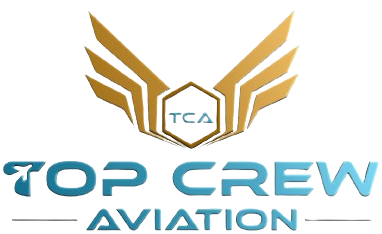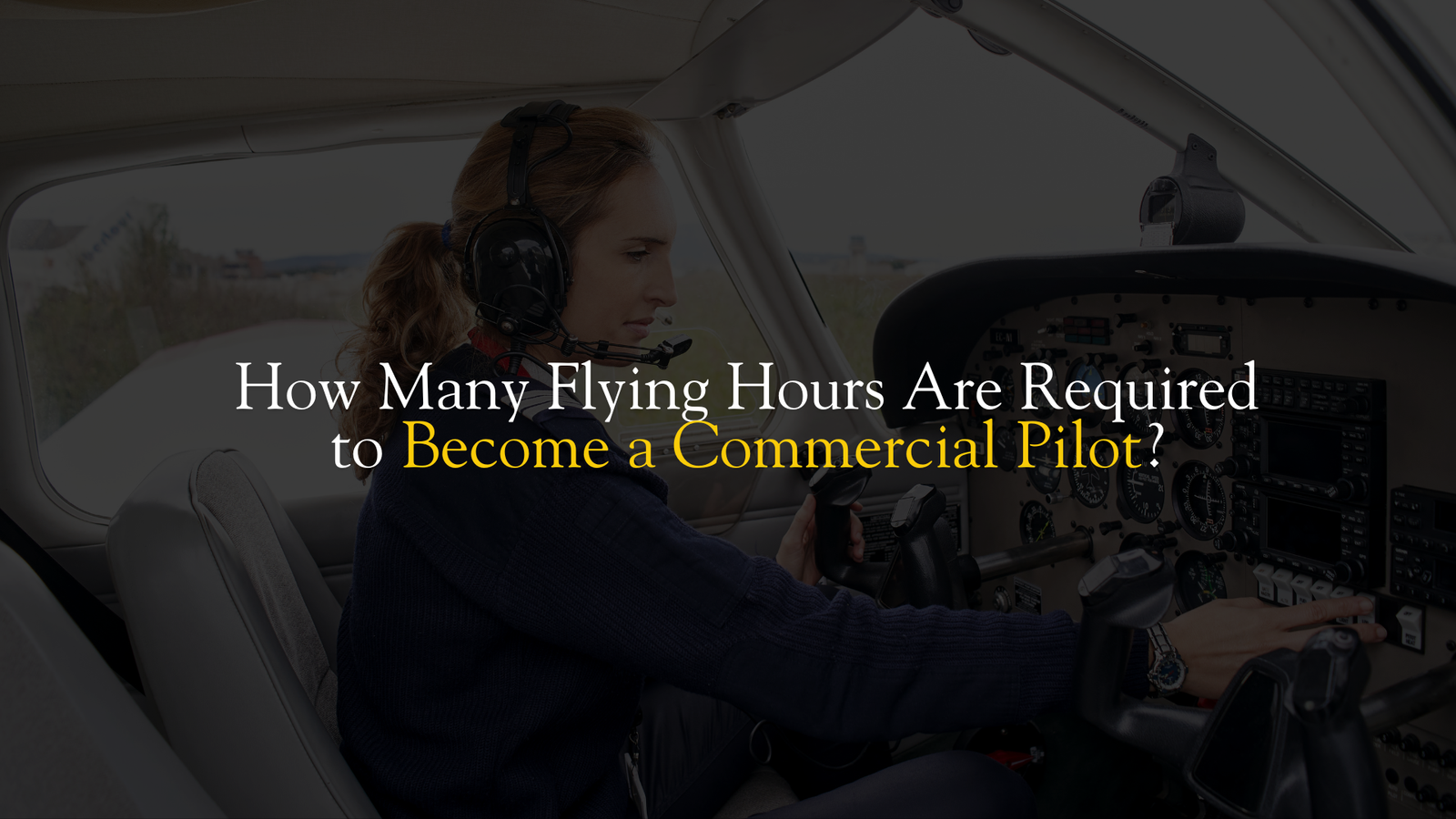Becoming a commercial pilot is a dream career for many aviation enthusiasts. The path is exciting, but it comes with specific requirements—one of the most important being flight hours. Flight time is not just a number; it’s proof of experience, skill, and safety. Whether you aim to fly commercial airlines, cargo aircraft, or charter planes, completing a set number of flying hours is a legal and professional necessity.
So, how many flying hours does it take to become a commercial pilot? Let’s break it down step by step.
Becoming a commercial pilot is a dream career for many aviation enthusiasts. The path is exciting, but it comes with specific requirements—one of the most important being flight hours. Flight time is not just a number; it’s proof of experience, skill, and safety. Whether you aim to fly commercial airlines, cargo aircraft, or charter planes, completing a set number of flying hours is a legal and professional necessity.
So, how many flying hours does it take to become a commercial pilot? Let’s break it down step by step.
What Is a Commercial Pilot License (CPL)?
A Commercial Pilot License (CPL) allows you to earn money by flying an aircraft. It is one step ahead of the Private Pilot License (PPL) and is required if you want to work as a pilot for airlines, charter services, cargo companies, or aerial survey agencies.
In India, the CPL is issued by the Directorate General of Civil Aviation (DGCA). To obtain it, you must meet certain academic qualifications, clear medical tests, pass theoretical exams, and—most importantly—log the required flight hours.
DGCA Requirements for Flight Hours in India
According to DGCA regulations, a pilot must complete a minimum of 200 flying hours to be eligible for a Commercial Pilot License. These 200 hours are not random—they are structured to ensure a well-rounded training experience. Here’s a breakdown of how those hours are typically distributed:
Breakdown of Flying Hours:
| Category | Minimum Requirement |
| Total Flight Time | 200 hours |
| Pilot-in-Command (PIC) | 100 hours |
| Cross-Country Flight (Solo) | 50 hours |
| Instrument Flying | 40 hours (20 on simulator) |
| Night Flying | 15 hours (with 5 night landings) |
| Cross-Country Check Flight | 1 (min. 250 NM with landings at 2 airports) |
Each category tests different flying skills: navigation, decision-making, instrument handling, and operating in day and night conditions.
Read Also – Why More Indian Students Are Flying to South Africa for Pilot Training
Why Are These Hours Important?
Flying hours are not just a number—they are a measure of safety and competence. The more time a pilot spends in the cockpit, the more exposure they get to real-life weather patterns, mechanical systems, airspace rules, and emergency procedures. This experience builds the confidence and decision-making skills required to handle commercial flights safely.
Also, airlines and aviation authorities consider logged hours as a benchmark for hiring and promotions. Whether you’re applying to IndiGo, Air India, or international airlines, your total flying hours can significantly influence your chances of selection.
Flying Hours: India vs. Other Countries
Let’s take a quick look at how India compares with other countries when it comes to required flying hours for a CPL.
India (DGCA):
- 200 hours
- Training includes solo flights, night flying, and instrument flying.
- Type rating is not included.
United States (FAA):
- 250 hours (for FAA CPL)
- 1,500 hours (for airline transport pilots under FAA rules)
- Emphasis on PIC and cross-country flying.
Europe (EASA):
- 200 hours minimum
- Often part of an Integrated ATPL (Airline Transport Pilot License) program.
- Structured courses like MPL (Multi-Crew Pilot License) are available.
South Africa, Philippines, UAE:
- Most countries follow ICAO standards, which suggest 200 hours as the global minimum for CPL.
- However, quality and structure of training may differ.
The 1,500-Hour Rule: What Is It?
In some countries like the United States, pilots must log 1,500 total flying hours to work for a commercial airline. This is known as the “1,500-hour rule” and applies to Airline Transport Pilot License (ATPL) applicants.
In India, you can start as a First Officer after 200 hours, but building experience to reach 1,500 hours is still essential for becoming a Captain. Airlines also prefer pilots with more hours when shortlisting candidates during recruitment drives.
How Do Student Pilots Build Flight Hours?
Flight hours are earned during your training program, often through:
- Dual Instruction: Flights with your instructor.
- Solo Flights: Flying alone under supervision.
- Cross-Country Flights: Long-distance navigation.
- Simulator Training: Especially for instrument and multi-engine hours.
- Time Building: Post-training flying to reach the 200-hour requirement.
Many students choose to train in India, South Africa, or the U.S. based on factors like cost, airspace availability, and training quality.
Time and Cost to Complete 200 Hours in India
Duration:
- 12 to 18 months on average
- May extend based on weather, aircraft availability, and student progress
Cost:
- ₹35–₹55 lakh depending on the flying school
- Includes ground school, medicals, DGCA exams, and aircraft rental charges
Beyond the CPL: What’s Next?
Even after obtaining your CPL, you’re not ready to fly for an airline just yet. Most airlines require:
- Type Rating: Specialized training to fly a specific aircraft like Airbus A320 or Boeing 737
- Simulator Checks and CRM Training
- Additional Flight Hours (built through charter flights, instructor jobs, or flying abroad)
So in reality, your pilot journey doesn’t stop at 200 hours—it only begins there.
Common Myths About Flying Hours
I only need 200 hours to get a job.
Reality: Most airlines look for more hours and additional certifications.
Simulator hours are counted as flying hours.
Reality: Only a limited number of simulator hours are counted, mostly for instrument flying.
All 200 hours are actual flying hours.
Reality: Some of the hours are dual instruction, some solo, and some simulated.
Tips to Log Your Hours Efficiently
- Choose a flying school with good aircraft availability.
- Train continuously—avoid long breaks.
- Use time wisely for cross-country and night flying.
- Keep a digital and physical logbook updated.
- Use every opportunity (weather permitting) to fly.
Final Thoughts:
Flight hours are your foundation as a pilot. Logging the required number is not just a box to tick—it’s your hands-on experience, your learning journey, and your ticket to aviation professionalism. Whether you choose to train in India or abroad, make sure your flying hours include quality training, not just quantity.
Ready to Start Your Flight Journey?
If you’re serious about becoming a commercial pilot, your training path matters just as much as your flying hours. That’s where Top Crew Aviation comes in.
Top Crew Aviation offers structured pilot training programs designed to help you complete your 200 flying hours with professionalism and precision. With experienced instructors, DGCA-compliant curriculum, and access to world-class flying facilities, Top Crew Aviation is your launchpad to a successful aviation career.


